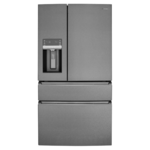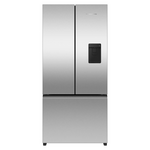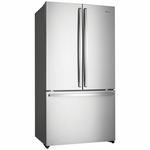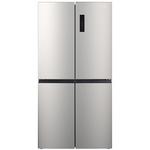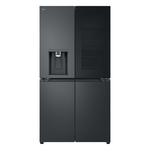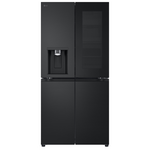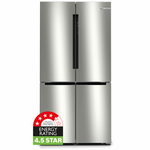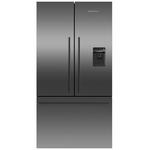
How to properly store meat and dairy in your fridge
Proper storage of meat and dairy produce in your fridge not only ensures its freshness and quality, but also prevents the growth of harmful bacteria that could potentially lead to food poisoning.
This handy guide from leading Australian e-commerce retailer Appliances Online share some best practice tips for storing meats and dairy products in your fridge.
Understanding your fridge's varying temperatures
Your fridge isn't a uniform environment; it has distinct temperature zones that impact food storage. Top shelves are slightly warmer, while the bottom shelves tend to be coldest part of the fridge. The fridge door, due to its frequent opening and closing, is the warmest, making it less suitable for highly perishable foods.
Understanding these zones will help you store your meats and dairy products more effectively.
Storing meats
- Raw meats: Raw meats, a potential breeding ground for bacteria, should always find their place on the bottom shelf. Using sealed containers will prevent potential cross-contamination from fresh meat juices to other food items.
- Cooked meats: Once meats are cooked, cooling them down before refrigeration is crucial. In fact, never put hot foods of any kind directly into your fridge. Airtight containers on the top shelves offer a more consistent temperature, preserving the flavour of that delicious roast beef while ticking the food safety box.
Storing dairy
- Milk: Milk is best kept in the cooler and more stable temperatures found on the middle or lower shelves. Avoid the fridge door - despite its appearance as a convenient storage spot - as the fluctuating temperature can accelerate spoilage. The fridge door is better used for jars of sauces, condiments and beverages that need to be kept cold but are not highly perishable like dairy is.
- Cheese: Cheese, with its need to breathe, should be stored in specialised containers, deli drawers, or dedicated cheese bags. This protects its texture and flavour.
- Butter and yoghurt: Butter and yogurt, with their higher resistance to spoilage, can find a comfortable spot in the fridge door. This convenience makes them easily accessible while maintaining their quality.
Extra food safety tips
- Be kind to deli items, fruit and veggies! If possible, store food items like soft and hard cheeses in a deli drawer to preserve their freshness. Similarly, different types of foods like fruit, avocados and leafy green vegetables can benefit from being kept in the crisper drawer.
- Monitor use-by dates: Regularly check expiration dates to avoid spoilage and ensure you're consuming items within their safe window.
- Don’t refrigerate hot foods: Let cooked food cool to room temperature before putting it into the fridge. Putting hot foods directly into the cold fridge can raise the overall internal temperature, creating conditions that promote bacterial growth and potentially compromise the safety of other stored foods.
By adhering to these guidelines, you’ll not only extend the shelf life of raw foods like meats and dairy, but you’ll also reduce food waste and contribute to a safer and healthier kitchen environment.
If your old fridge is struggling to keep food fresh and you're on the lookout for a new one, Appliances Online has hundreds of models to choose from. Our legendary FREE delivery reaches 95% of Australia's population, usually by the day after you place your order, if the fridge is in stock. We also offer paid Same Day Delivery in metro areas of NSW, QLD and VIC for those times when you just can’t wait - you just need to order before 12pm Mon-Fri.

